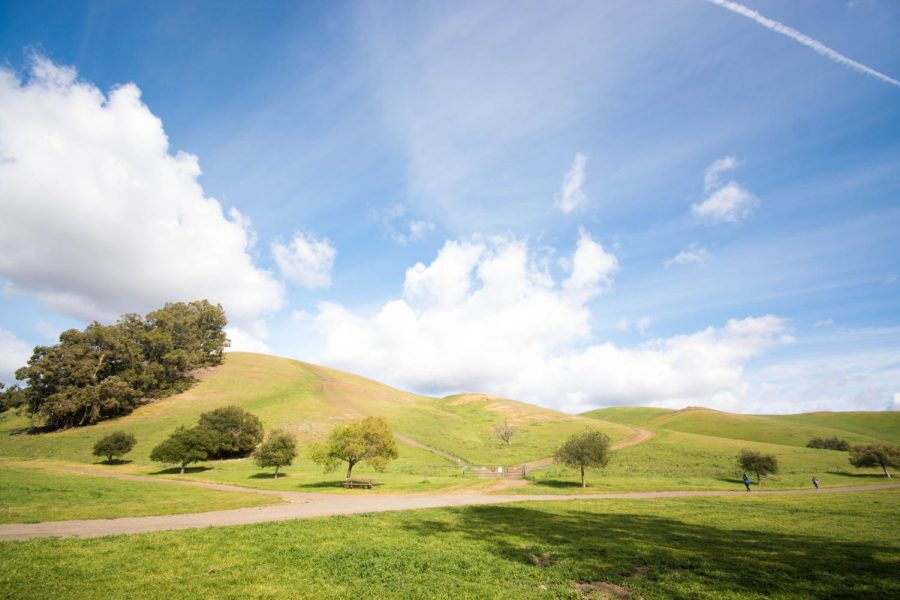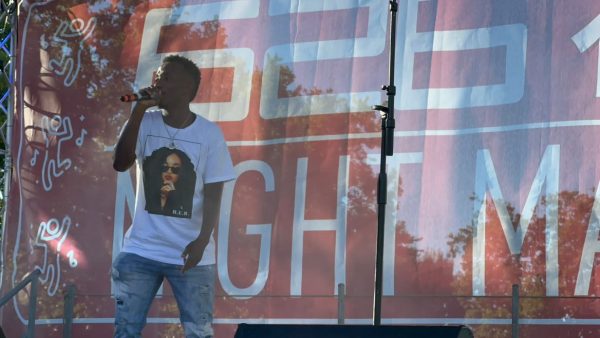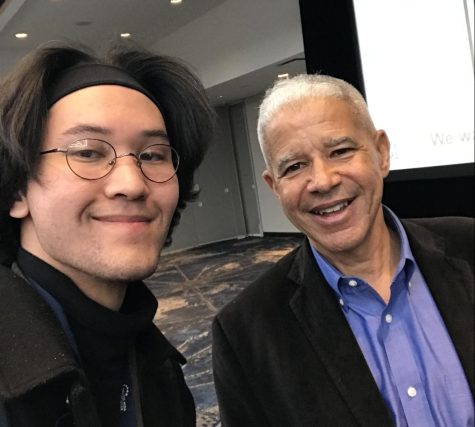Cossack Priest In the Wild West: A Profile of Father Agapius Honcharenko
March 16, 2022
Hayward residents need not go far to experience the spirit of Ukrainian triumph
While the cacophony of war reverberates across the world, Father Honcharenko’s maverick legacy exemplifies a microcosm of the Ukrainian resistance against a domineering adversary and a historical tribute to the indomitable spirit of Ukrainian identity.
Park “Ukraina” was once a homestead of Father Agapius Honcharenko, a Ukrainian patriot, an exiled Orthodox priest, and a radical humanitarian.
Born as Andrii Humnytsky in 1832’s Kyiv, Honcharenko was a pious man inspired towards religion through his Cossack ancestry and opposition towards the absolutist Russian reign over his fellow Ukrainian compatriots.
After training at the Kyiv Theological Seminary and bearing witness to the squalor of the peasantry under serfdom during his tenure at the Caves Monastery, Honcharenko was appointed to the Russian embassy chapel in Athens as a resident hierodeacon in 1857.
Emboldened by his abolitionist convictions, Honcharenko submitted anonymous articles to The Kolokol—a London-based democratic socialist Russian periodical—condemning the Tsarist government and the Orthodox Church for permitting serfdom to continue within the Russian Empire.
Honcharenko’s diplomatic posting spanned for three years until the embassy staff caught the priest in correspondence with the Kolokol, prompting his subsequent arrest by Russian authorities in 1860. Fortunately for the rogue civil servant, Honcharenko escaped custody by fleeing to first to Istanbul, then London, Jerusalem, and Cairo before embarking on a journey to find refuge across the Atlantic Ocean in 1865.
Upon arriving in the United States, Honcharenko celebrated the first Orthodox liturgy in the U.S. outside of Alaska and found work as a Greek language teacher and a tutor. Alas, his infamy among Russian officials in the country soon caught up with him, and the fugitive cleric was excommunicated from the Russian Orthodox Church for heresy.
Although stripped of his title and officially defrocked as a priest, this did not prevent him from fulfilling priestly duties.
Honcharenko, joined by his Italian-American wife Albina, then left to settle on the West Coast in 1867. In the following year of 1868, he published the first Russian-English newspaper in America—the Alaska Herald/Svoboda—at the suggestion of famed Russian anarchist, Mikhail Bakunin, as noted by Jars Balan, the Director of the Kule Ukrainian Canadian Studies Center at the Canadian Institute of Ukrainian Studies at the University of Alberta.
Balan states that the bilingual paper served as a venue for expressing Honcharenko’s progressive views and his keen interest in developing the newly purchased Alaskan territory, advocating for the aboriginal and the Slavic settler population over the interests of exploitative businesses.
The Herald remained in circulation until 1873, when an exhausted Honcharenko halted publication after monetary troubles and pressure from the Russian Orthodox Church. Honcharenko’s paper saw moderate success, even penetrating into dissident communities in the Russian Far East. After selling his printing press, Honcharenko bought 80 acres of land overlooking Hayward and took up farming, sharing his gardening skills with the California Horticulturist: a local agriculture magazine.
Honcharenko was steeped with pride in his Cossack heritage and his Ukrainian identity, along with his devotion to the Orthodox faith. Honcharenko closely followed events in his native land throughout his turbulent life and took a great interest in everything Ukrainian. He first came to the attention of his countrymen in Austro-Hungarian Ukraine in 1894 with the publication of an article titled “A Cossack Land in North America or Alaska” in the socialist journal Narod.
The article posited that Ukrainian Cossacks had settled the American northwest and Alaska prior to any other European group — a narrative of white Europeans teaching the Natives better fishing and farming practices, as ostensibly corroborated by local lore.
Honcharenko’s submission to the Narod aroused the curiosity of waves of Ukrainian immigrants to North America, inspiring a group of Ukrainians in Canada to establish a communal colony on his farmstead in 1900-1902, named “The Ukrainian Brotherhood.”
The Brotherhood included a few young Ukrainian immigrant families, but the initiative ultimately after repeated attempts as “some members of the Brotherhood saw the communal experiment as a cooperative, others saw it as a Cossack brotherhood, and still others as a commune,” said Balan, citing a “lack of consensus, conflicting personalities, age differences, and varying levels of practical experience [in agriculture],” in his research paper, “California Dreaming: Agapius Honcharenko’s Role In the Formation of the Pioneer Ukrainian-Canadian Intelligentsia” in the Journal of Ukrainian Studies.
Upon questioning as to why Honcharenko’s legacy is worthy of contemporary scholarship, Balan stated that Honcharenko was a “pioneer of California,” establishing a Ukrainian beachhead in North America before Ukrainian immigration began in earnest during the 1880s.
Influential Ukrainian community leaders and historical figures within Canadian politics, such as Myroslav Stechishin and Taras Ferley, were directly inspired to move to the New World by Honcharenko’s egalitarian and patriotic ideals of a thriving Ukrainian community abroad—a bleak vision at home due to the authoritarian dispositions of the Russian state and subservient Orthodox Church.
Beyond the scope of the Ukrainian community, Honcharenko’s presence in Hayward history is undeniable. Honcharenko, despite his forced exit from priesthood, conducted weekly Orthodox services, baptizing over 100 people within the community. During the 1906 San Francisco Earthquake, Honcharenko welcomed victims onto his homestead; a gesture of kindness later repaid when the Hayward community collectively secured a lifetime lease of property when Honcharenko could not pay.
Today, his homestead of Park “Ukraina” is registered as Historical Landmark #1025 as part of the Garin/Dry Creek Pioneer Regional Parks system, owned and managed by the East Bay Regional Park District and the Ukrainian Community of California circa 1999.
Father Honcharenko embodies gallant self-determination; stalwart in his commitment to service, fraternity, and equality. Diane Curry, the Executive Director and Curator of Hayward Area Historical Society, describes him as an embodiment of the Californian promise, stating that “he’s a good example of California as a whole, as California is a place where you can be yourself and explore a new avenue in life.”

















